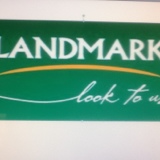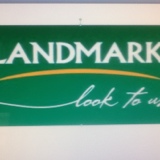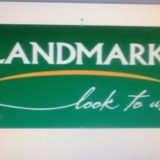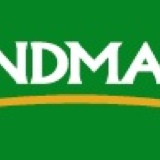Information
-
Document No.
-
Audit Title
-
Client / Site
-
Conducted on
-
Prepared by
-
Location
-
Personnel
1.0 General
-
1.1 Has the site had a break-in in the past five years?
-
1.2 Where corrective actions implemented to address the security gap following the event?
-
1.3 Do security services patrol your site?
-
1.4 Are employees aware of the emergency procedures outlined in the Landmark handy plan?
Auditor guidance notes
-
Some businesses or locations may require on-site security to enhance physical security. Employees should not be left on their own for long periods of time. Sensitive materials, including confidential records should be appropriately destroyed, disposed of or secured. Emergency evacuation plans should be implemented and maintained to assist employees and emergency services in the event of an emergency. This plan should be prominently displayed. Employees should be trained in how to deal with aggressive clients/customers for their personal safety
2.0 Visitor management and signage
-
2.1 Are there signs posted on the gate and around the perimeter of the property indicating that trespassing is prohibited when branch is closed?
-
2.2 Are there appropriate internal signs visible to guide visitors to reception area and indicating restricted access areas?
-
2.3 Are all visitors (excluding customers) asked to complete the visitor sign in book & inducted when on site?
-
2.4 Are visitors escorted during their time on site?
-
2.5 Are delivery drivers movements monitored while on site?
Auditor guidance notes
-
Effective signage and/or directional signs should be considered to provide additional guidance to visitors in locating reception areas. It can also assist in controlling activities and movements throughout premises and grounds. Always request to see identification when visitors / regulators enter site. Visitors should not be allowed to wonder freely around the site. Visitor sign in book should be available at the front desk and completed by visitor upon arrival. Visitors are to be given a basic induction. Install warning signs around the perimeter of the business to warn intruders of what security treatments have been implemented to reduce the opportunities for crime.
3.0 Fences and gates
-
3.1 Is landscaping around the business free from potential hiding places?
-
3.2 Is landscaping regularly maintained and trimmed to allow natural surveillance?
-
3.3 Do trees or shrubs provide a means of unauthorised access?
-
3.4 Are boundary fences and gates present around the property to restrict access?
-
3.5 Are the boundary fences and gates in good condition?
Auditor guidance notes
-
Ensure fences surround the perimeter of your property to clearly define the boundaries and restrict access. Open -style fencing and gates of similar construction to prevent an offender from using the fence for concealment. All gates should be kept shut and locked when area is not in use or branch is closed. Fences and gates should be maintained to assist with protection of the property
4.0 Security lighting
-
4.1 Is there adequate and operational lighting installed externally?<br>
-
4.2 Are entry and exit points well lit?
-
4.3 Do you leave limited or other lighting inside the business on at night?
-
4.4 Is lighting positioned in a way to reduce opportunities for vandalism?
Auditor guidance notes
-
Install lighting in and around your business, particularly over entry/exit points to create an even distribution of light with no glare, eg. Sensor lighting or flood lighting. Leave a limited amount of lighting on at night to enable patrolling police , security guards or passing people to monitor activities whin the site.
5.0 Building & warehouse design & construction
-
5.1 Is the building & doors of solid enough construction to reduce the risk of a break in?
-
5.2 Are these doors fitted with quality lock sets to resist access?
-
5.3 Are at risk doors locked at all times?
-
5.4 Is the building protected to reduce the risk of vehicle ram raid ( eg: bollards in front of glass windows etc.)
-
5.5 Are external windows of good construction & fitted with quality lock sets?
-
5.6 Are windows free of promotional materials (I.e. restricting the ability to see in and out)?
-
5.7 Is electrical power box locked if outside and accessible to the general public?
-
5.8 Are Skye lights secured?
-
5.9 Is shelving arranged to provide good sightliness within the store?
Auditor guidance notes
-
The walls, doors, windows and ceilings should be of solid construction. It is recommended that windows be fitted with key-operated lock sets to restrict unauthorised access. No more than 25% of display windows should be covered with promotional materials to increase surveillance opportunities to and from the business. The power board should be houses within a cupboard or metal cabinet and secured with an approved electricity authority lock to restrict unauthorised tampering with the power supply if located outside the building. Bollards or barriers can be installed to reduce the opportunity for ram-raid attacks. Shelves should be positioned to maximise supervision from the counter. Limit the number of entry/ exit points to restrict unauthorised access.
6.0 Intruder alarms & surveillance equipment
-
6.1 Is an intruder alarm system installed & monitored by an external supplier?
-
6.2 Do all individuals have their own access code?
-
6.3 Are access codes cancelled or changed when employees resign or are terminated?
-
6.4 Do you have surveillance equipment installed to cover theft in high risk areas?
-
6.5 Is footage recorded on video/hard drive?
Auditor guidance notes
-
Movement detection devices should be strategically located around the premises. Employees should be allocated their own code - avoid using a 'general code'. Where possible the intruder alarm system should be monitored by a security company. Never respond to an 'alarm' event without Police or security in attendance. Remove individual codes when employees leave the business. Cameras could be installed in and around the business to maximise surveillance opportunities if required. Ensure that the requirements of the Surveillance and Privicy Act are adhered to.
7.0 Property identification
-
7.1 Is your site assets register up to date?
-
7.2 Is all valuable property / equipment per antsy marked with a corporate identifier (such as ABN or asset barcode).?<br><br>
-
7.3 Are valuable assets left in vehicles when unlocked or overnight?
Auditor guidance notes
-
Record descriptions/ model/serial numbers of the property for easy identification via your asset register. Never leave valuable items in plain sight in vehicles.
8.0 Key and valuables control
-
8.1 Is the safe installed on site and is it securely anchored to prevent unauthorised removal?
-
8.2 Is the safe in an appropriate position (I.e. concealed) & kept locked at all times?
-
8.3 Is the combination widely known and / or the keys secured?
-
8.4 Are all allocated premises keys controlled via a key register?
-
8.5 Are all spare keys secured in a safe?
-
8.6 Are keys returned when employees resign or are terminated?<br>
Auditor guidance notes
-
The control of keys and valuables is very important and should be closely monitored by management. A key register should be used to,list which staff members have been issued keys, the type of keys issued and what areas they have access to. All keys should be returned or cancelled when employees leave the company.
9.0 Cash handling
-
9.1 Do you have a lockable cash draw?
-
9.2 Do you have irregular banking procedures?
-
9.3 Is money (except float) banked daily?
-
9.4 Is money always counted out of public view?
Auditor guidance notes
-
Establish clear cash-handling procedures within your business to reduce opportunities for crime. Limit the amount of money carried in the cash draw at any time ($200.00 float) Lock cash drawers when not in use, and clear money from the cash drawer on a regular basis, (e.g. To the safe) Avoid counting cash in view of the public
10.0 Bulk liquid and dangerous goods storage
-
10.1 Are bulk chemicals (including IBC's) stored outside?
-
10.2 Are there locks present which secure valves on bulk liquid storage tanks?
-
10.3 Do bulk liquid tanks have lids which are secured to prevent access?
-
10.4 Are external bulk chemical areas well lit?
-
10.5 Are Dangerous Poisons kept in a locked environment?
Auditor guidance notes
-
Bulk liquid tanks are vulnerable to theft / tampering and must be fitted with locks. Access to tanks to be restricted. Tanks should be located away from fences & located in well-lit areas. IBC's should be positioned with taps facing each other to prevent unauthorised release of chemical. Dangerous Poisons must be secured in a locked environment at all times
11.0 Vehicles and trailers
-
11.1 Are forklifts locked in the warehouse area at night?<br>
-
11.2 Are vehicles left on site over night?
-
11.3 Are vehicle keys stored in the safe at night?
-
11.4 Are trailers secured with a hitch locking mechanism at night?
Auditor guidance notes
-
Forklifts to be locked in warehouse area out of business hours. Vehicles to be locked in warehouse area or well-lit yard outside of business hours. Keys are to be secured in a safe or a secure area away from vehicles. Trailers should be secured with hitch locking mechanisms.
12.0 Terrorism threat
-
12.1 Do you request identification for large chemical or fertiliser purchases from unknown customers?<br><br><br><br>
-
12.2 Are large cash transactions reported (>10K)?
-
12.3 Do you have process in place to escalate any suspicious or suspect activities or orders.
Auditor guidance notes
-
Terrorism is a risk in our business as we sell many ingredients that could potentially be used to make explosive devices. Know your customer and ask yourself is this 'purchase' normal. Contact the police if you have any concern as to the intended use of any purchase. Report large cash transactions to your MOC
13.0 Off site transports
-
13.1 Does your regular freight contractor have a signed agreement in place?
-
13.2 Are loads left unsecure on vehicles over night?
Auditor guidance notes
-
Goods are secured on vehicles at all times. Goods in transit should not be left in unsecured areas. Loaded delivery vehicles should never be left unattended. A contract should exist with all regular freight contractors.










